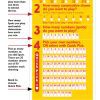Welcome to the world of blackjack, where the cards hold the power to make or break your fortune! Now, if you’ve ever wondered, “Can you put a 2 on a Jack in Blackjack?”—you’ve come to the right place. In this article, we’ll dive into the exciting realm of blackjack rules and unravel the mysteries behind card values in this popular casino game.
Blackjack is a game of strategy and luck, where players aim to reach a hand value of 21 or as close to it as possible. But when it comes to the specific question of whether you can put a 2 on a Jack, the answer is… well, it’s not that simple! The value of a Jack in blackjack is typically 10, and a 2 is worth 2 points. So, adding them together would give you a total of 12 points.
However, in certain variations of blackjack, the rules may allow you to assign different values to certain cards. This means that in some games, you might be able to choose to treat a Jack as a 2, in which case, you could indeed put a 2 on a Jack. But, it’s important to note that this depends on the specific rules of the game you’re playing. So, let’s explore the fascinating world of blackjack and uncover all the exciting possibilities in store!

Can You Put a 2 on a Jack in Blackjack?
Blackjack is a popular casino game that has stood the test of time. It combines skill, strategy, and a bit of luck to create an exciting and thrilling experience. One question that frequently arises among players is whether it is possible to put a 2 on a Jack in Blackjack. In this article, we will explore this question in detail and provide you with all the information you need to know about this particular scenario.
Understanding the Basics of Blackjack
Before diving into the question at hand, it’s important to have a solid understanding of the basic rules of Blackjack. In this card game, the objective is to have a hand value closer to 21 than the dealer’s hand, without exceeding that number. The cards 2 through 10 are worth their face value, while face cards (Jack, Queen, and King) are each worth 10. The Ace can be worth either 1 or 11, depending on the player’s choice.
Players are initially dealt two cards each, and can then choose to hit (receive additional cards) or stand (keep their current hand). The dealer will follow a specific set of rules when it comes to hitting or standing, which may vary slightly depending on the specific casino or variant of the game being played.
Can You Put a 2 on a Jack in Blackjack?
Now, let’s get to the heart of the matter – can you put a 2 on a Jack in Blackjack? The answer is no. In Blackjack, you cannot directly place a 2 card on top of a Jack card. The objective of the game is to make strategic choices based on the value of your hand and the cards the dealer has.
When playing Blackjack, your main goal is to achieve a hand value that is as close to 21 as possible without going over. While it may be tempting to try and combine specific cards, such as a 2 and a Jack, in reality, you have no direct control over the cards you are dealt. The game is ultimately determined by the luck of the draw and the decisions you make based on the given cards.
In summary, placing a 2 on a Jack in Blackjack is not possible within the rules of the game. The goal is to focus on making strategic choices based on the cards you are dealt, the dealer’s cards, and the overall objective of getting as close to 21 without exceeding that number.
Busting in Blackjack: What Does it Mean?
Busting in Blackjack is a term used to describe a situation where a player’s hand value exceeds 21. This is considered a losing hand, regardless of what the dealer has. In this section, we will explore the concept of busting in more detail and discuss its implications in the game of Blackjack.
Understanding the Concept of Busting in Blackjack
In order to understand what it means to bust in Blackjack, it’s important to familiarize ourselves with the basic rules of the game. As mentioned earlier, the objective of Blackjack is to have a hand value closer to 21 than the dealer’s hand, without going over this number.
Each card in the game has a specific value – numerical cards are worth their face value, face cards (Jack, Queen, King) are worth 10, and Aces can be worth either 1 or 11, depending on the player’s choice. The player is initially dealt two cards and can then choose to take additional cards (hit) or keep their current total (stand) in an attempt to get closer to 21.
The Consequences of Busting in Blackjack
When a player’s hand value exceeds 21, they are said to have busted. Busting is an automatic loss, regardless of the dealer’s hand value. This is because in Blackjack, the dealer must follow a specific set of rules when it comes to hitting or standing, and these rules do not apply when a player busts.
Busting in Blackjack can be a frustrating experience, as it typically means that the player has either miscalculated their hand value or made a poor decision in terms of taking additional cards. It’s important to keep in mind that Blackjack is a game of strategy and skill, and the goal is to make strategic decisions based on the cards you are dealt and the knowledge you have about the dealer’s hand.
In conclusion, busting in Blackjack means that a player’s hand value exceeds 21, resulting in an automatic loss. It is important to carefully consider your options and make strategic decisions in order to avoid busting and increase your chances of winning in this exciting and popular casino game.
Common Mistakes to Avoid in Blackjack
When it comes to playing Blackjack, there are a few common mistakes that players can make that can significantly impact their chances of winning. In this section, we will explore some of these mistakes and provide tips on how to avoid them.
1. Failing to Understand Basic Strategy
One of the most common mistakes that Blackjack players make is failing to understand and utilize basic strategy. Basic strategy is a set of rules and guidelines that can help players make the most optimal decisions in any given situation. It takes into account the player’s hand value and the dealer’s up-card, and provides information on whether to hit, stand, double down, or split.
By familiarizing yourself with basic strategy, you can greatly improve your chances of winning in Blackjack. It is important to study and understand the basic strategy charts that are widely available online or in books. These charts outline the correct moves for each possible hand combination, taking into consideration the dealer’s up-card as well.
2. Ignoring Bankroll Management
Another mistake that players often make in Blackjack is ignoring bankroll management. Bankroll management refers to the practice of setting limits on how much money you are willing to risk on any given session. It is important to set a budget and stick to it in order to avoid excessive losses and prevent yourself from chasing your losses.
In addition to setting a budget, it is also important to determine your betting limits. This means determining the maximum bet size you are comfortable with based on your bankroll. By practicing responsible bankroll management, you can ensure that you are playing within your means and protect yourself from significant financial losses.
3. Playing at Tables with Unfavorable Rules
Not all Blackjack tables are created equal, and playing at tables with unfavorable rules can put you at a significant disadvantage. Different casinos and variants of the game may have different rules when it comes to things like the number of decks used, whether the dealer hits or stands on a soft 17, and whether doubling down after splitting is allowed.
It is important to familiarize yourself with the specific rules of the table you are playing at and choose tables that offer favorable conditions. Ideally, you should look for tables that use fewer decks, have rules that are more favorable to the player (such as the dealer standing on a soft 17 and allowing doubling down after splitting), and offer other favorable conditions such as surrender options.
4. Allowing Emotions to Affect Decision Making
Lastly, one common mistake that players make in Blackjack (and other casino games) is allowing emotions to affect their decision-making process. It is important to approach the game with a clear and rational mindset, making decisions based on strategy and the cards that are on the table.
Allowing emotions such as frustration, anger, or excitement to cloud your judgment can lead to poor decision-making and ultimately result in losses. It is important to stay focused and disciplined throughout the game, sticking to your strategy and avoiding impulsive decisions based on emotions.
In conclusion, by avoiding these common mistakes and adopting a disciplined and strategic approach, you can significantly improve your chances of winning in Blackjack. Remember to study and utilize basic strategy, practice responsible bankroll management, choose tables with favorable rules, and stay focused on the game rather than letting emotions guide your decisions.
Key Takeaways: Can You Put a 2 on a Jack in Blackjack?
- No, you cannot put a 2 on a Jack in Blackjack as each card has its own value.
- In Blackjack, Jacks are worth 10 points, while 2s are worth 2 points.
- You can only combine cards that have the same value or cards that are adjacent in sequence.
- To win in Blackjack, you need to get a hand value as close to 21 as possible without going over.
- Understanding the value of each card is crucial for making strategic decisions in the game.
Frequently Asked Questions
Curious about the rules of Blackjack? Wondering about the possibilities of placing a 2 on a Jack? We’ve got you covered! Check out these commonly asked questions to clear up any confusion.
Can you put a 2 on a Jack in Blackjack?
In the game of Blackjack, you cannot directly place a 2 on a Jack. Each card in the deck has a specific value, and the goal of the game is to get a hand that is as close to 21 as possible, without going over. In Blackjack, a Jack has a value of 10, while a 2 has a value of 2. So, if you were to put a 2 on a Jack, the value of the hand would be 12, which might not be the best strategy.
However, there are certain card combinations that can result in the value of your hand being 12. For example, if you have a Jack and a 2 as your initial cards, the value of your hand would be 12. In this case, you could choose to stand with that hand or ask for another card (hit) to try and get closer to 21. It’s important to remember that the rules of Blackjack allow for multiple actions depending on the value of your hand and your strategy.
What is the value of a Jack in Blackjack?
In a game of Blackjack, a Jack has a value of 10. This holds true for all variations of the game. Along with the Queen and King, a Jack is considered a face card and is worth 10 points. The other numbered cards in the deck retain their face value (e.g., a 2 is worth 2 points, a 3 is worth 3 points, and so on) while the Ace can be worth either 1 or 11 points depending on the player’s preference.
Knowing that a Jack is worth 10 points is crucial when playing Blackjack. It helps you calculate the total value of your hand and make strategic decisions based on the likelihood of going over 21. Remember, the objective of the game is to get as close to 21 as possible without exceeding it, and understanding the value of each card is essential in achieving that goal.
How does placing a 2 on a Jack affect the outcome in Blackjack?
Placing a 2 on a Jack in Blackjack would result in a total hand value of 12. While 12 is not necessarily a bad starting point, it does put you at a disadvantage. The reason for this is that a hand value of 12 is closer to the lower end of the spectrum, making it more likely for you to need additional cards to reach a stronger hand.
However, the outcome in Blackjack isn’t solely determined by your initial hand. It also depends on the actions you take thereafter. Depending on the dealer’s card and your strategy, you may decide to hit (ask for another card) or stand (keep your current hand). So, while placing a 2 on a Jack sets you up with a value of 12, it’s up to you to decide how you want to proceed to maximize your chances of winning.
What actions can you take if you have a 2 and a Jack in Blackjack?
If you have a 2 and a Jack in your initial hand in Blackjack, you have a total hand value of 12. With a 12, you can take a variety of actions based on the specific rules of the Blackjack variant you’re playing and your strategy. Some common actions players take with a hand value of 12 include hitting (asking for another card) or standing (keeping your current hand).
The decision on whether to hit or stand depends on several factors, such as the dealer’s visible card, the number of decks used in the game, and the specific rules pertaining to the value of the dealer’s hand. It’s important to consider these factors, along with your own risk tolerance and playing style, when deciding your next move. Remember, the objective is to maximize your chances of getting closer to 21 without going over.
What other card combinations give a hand value of 12 in Blackjack?
In addition to a combination of a 2 and a Jack, there are other card combinations that can result in a hand value of 12 in Blackjack. Some examples include a combination of a 4, 4, and 4, or a 3, 3, and 6. Each combination has its own unique probabilities and outcomes, so it’s essential to consider the specific cards in your hand and their individual values when strategizing your next move.
Remember, Blackjack is a game of probabilities, and understanding the possible combinations and their associated values is crucial in making informed decisions. Depending on the rules of the game and your level of risk tolerance, you may choose to hit, stand, or even double down in certain situations. Your goal is to make the best move possible based on the information available to you and increase your chances of winning.
How to Play Blackjack
Summary
So, can you put a 2 on a Jack in Blackjack? The answer is no. In Blackjack, a Jack has a value of 10, and a 2 has a value of…well, 2! To win, you want to get as close to 21 as possible without going over. Adding a 2 to a Jack would give you a total of 12, not the desirable 20. So, it’s best to stick with what you’ve got and hope for a winning hand!
In Blackjack, each card has a specific value, and adding a 2 to a Jack won’t give you the best chances of winning. Remember, the goal is to get as close to 21 as possible, and a Jack’s value of 10 is already pretty high. So, next time you’re playing Blackjack, keep in mind that two isn’t always better than one!









